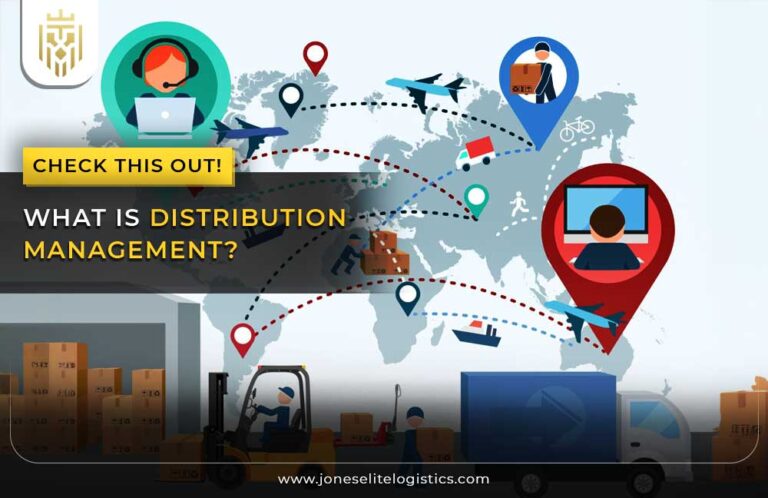What is Retail Supply Chain Management:
Retail Supply Chain Management (SCM) is concerned with managing and coordinating the various activities or flow of goods from the sellers’ perspective into the hands of consumers. It incorporates buying the stock, getting it to the required stores, and even owning the stock. Meaningful SCM assists retailers in maximizing business activities, cutting expenses, and raising the level of satisfaction among consumers through the distribution of goods and services whenever and wherever required.

What makes retail supply chain management important?
The specific context that requires the management of retail SCM includes keeping the importance of the company strong. This arrangement makes for smooth product flow, costs cut down and customer satisfaction attained to the fullest. It enables the retailers to quickly satisfy customers’ needs, avoid stock-out situations, and avoid situations whereby they have too many stocks of certain items hence increasing their profits through efficiency and effectiveness.
Components of Retail Supply Chain Management:
The primary subfields of retail supply chain management are sourcing and procurement, warehousing and distribution, reverse logistics, demand planning and forecasting, and transportation. Every link acts as a crucial factor to assure stock availability to consumers at the right time and within the right cheapest method.
Sourcing and Procurement:
Sourcing and procurement refer to the identifying of suppliers, agreeing on suppliers’ terms and conditions, and acquiring materials and services required in selling merchandise. Strategies of procurement management promote and sustain value for money purchasing, quality supply, and a good supply chain partnership that supports a reliable supply chain.
Warehousing and Distribution:
Warehousing and Distribution, on the other hand, concentrates on providing efficient methods of storing the products and effectively delivering them to the stores. This component entails coordinating the functionality of holding stocks and materials, placing orders, and planning the layout and use of storage space to minimize costs and satisfy customers.
Reverse Logistics:
Reverse Logistics is concerned with the returns of goods by customers back to the dealers or producers. This process involves accepting returned products, recycling, and or final disposal of products. Reverse logistics help to improve customers’ satisfaction, recover value from the returned product, and support sustainability.

Demand Planning and Forecasting:
Demand Planning and Forecasting entail the anticipation of the demand rate of customers in order to meet their demand for various products. This component applies past, current, and future sales information to aid the retailers in planning so that they can avoid situations where they run out of stock or on the other end order too many of a certain product.
Transportation:
Transportation in retail Supply Chain Management encompasses the movement of products and commodities from production facilities, through the distribution centers and right to the retail outlets. Transportation management means on-time delivery, reduction of the cost of the shipment and the transit time hence a good responsive and cheap supply chain.
Significance of Supply Chain in Retail Management:
The supply chain is critical when it comes to the management of retail stores since it controls the passage of goods from the producers to consumers. In fact, it has cross-cutting implications on all the facets of retail operations, including purchasing, supply, store, order fulfillment, and relations with the actual consumer. Optimal supply chain management increases and organizes functionality, decreases expenses, and satisfies the customers through the availability of products in the right places at the right times.
Benefits of Retail Supply Chain Management:
A well-managed retail supply chain also has the following advantages; enhanced delivery capabilities, increased market coverage, reduction of costs occasioned by hiring of workers to manage the supply warehouses, and high productivity.
Faster and Efficient Delivery:
Efficiency is maintained throughout the whole supply chain so that products get to the retail stores and the consumers as soon as possible. Hence improving the overall customer satisfaction by leveling up to the consumers’ anticipation, especially in the aspect of delivery of the products.

Increased Market Share:
Retailers who effectively manage a supply chain can act proactively and quickly to implement change in relation to the market and the consumers. It enables them to capture a larger market share by satisfying customers’ needs than rivals, thus increasing sales and more brand recognition.
Reduce Warehouse Labor Costs:
Optimizing the warehouse function is a key aspect of supply chain management of retail stores that helps cut a lot of costs, especially through the minimization of labor. Organizational structure, automation, and improved inventory reduce manual work hence the cost of labor while at the same time increasing the capacity of operations.
Increased Productivity:
Effective supply chain management is beneficial in enhancing productivity due to the reduction of waste relating to supply chain activities. This in turn helps the retailers to concentrate on the most important parameters such as quality of service to the customer, increased sales, and overall business health hence increasing overall business profitability.
Challenges of Retail Supply Chain Management:
There are various issues that influence the supply chain in retail stores some of which are; handling stock, shipping time, customer satisfaction levels, global scarcity, and multiple suppliers. Solving these challenges causes a working environment to remain effective, expenses to be managed, and customers to be satisfied.
Optimizing Inventory Levels:
Aggravating the problem of understocking, or on the opposite side, overstocking is another crucial issue while balancing the inventory levels for the corresponding demand. Understanding of how much demand is required and when real-time stock visibility and how best to restock to ensure the stock-outs do not occur while at the same time avoiding too much-holding costs.
Managing Shipping Delays:
A ripple effect is caused on the material transportation network and it results in stock outs, lost sales, and dissatisfied customers. Timely and efficient planning of logistics and having a number of transport modes and good relationships with transporters can reduce the adverse effects of time-consuming shipments and deliveries.

Improving Customer Experience:
The management of supplies should be orderly to help in the achievement of high customer experience. This ultimately comprises the strategic elements of consistency of stock both for local and imported products, timely delivery, and easy return processes. It simply means that retailers need to implement and enhance supply chain security in a way so that consumers’ demands can be met and sometimes surpassed.
Dealing with Global Shortages:
The scarcity affects the international retail chain and the finished as well as the raw materials. Having many sources of supply, creating inventories to hedge against such a possibility, and having appropriate alternatives are invaluable methods of managing the repercussions of global scarcities and stabilizing the availability of products.
Managing Multiple Vendors:
Managing many vendors is challenging and may lead to the need for proper vendor management mechanisms. Communication with multiple vendors, cultivating relationships with vendors and employees, and utilizing performance measurement are important factors in source reliability.
Improve Your Retail Supply Chain with Jones Elite Logistics:
This company provides discrete services to improve the supply retail chain for your business as Jones Elite Logistics. They are also well equipped in the management of stocks, logistics and organization of fleet, and management of relations with the vendors to name but a few. They use the state-of-the-art technology and benchmarks of the industry to enhance the effectiveness of the processes and resource management. Retailers face many problems in their supply chain planning and thanks to cooperation with Jones Elite Logistics those issues will be resolved as well as costs decrease and satisfaction of customers will be likely to increase.
FAQs
1) What is Retail Supply Chain Management?
Retail Supply Chain Management entails the management of the flow of a product from the supplier to the end consumer and it takes into account sourcing, storage, and distribution with the aim of improving the input and output flow of the products.
2) What are the components of Retail Supply Chain Management?
Some of the components of supply chain management include sourcing and procurement, warehousing and distribution, reverse logistics, demand planning and forecasting, and transportation and all of these components are very essential when it comes to the supply chain.
3) What are the challenges of Retail Supply Chain Management?
Some are as follows: proper stocking of stock, shipping issues, enhancing customers’ satisfaction, the problem of scarcity in a world economy, and multiple sources problems, which affect organization performance and customer satisfaction.
4) What is the significance of Retail in Supply Chain Management?
Retail is crucial in the supply chain and ensures the availability of products to the clients, thus affecting efficiency, cost control, and customer satisfaction leading to competitors and profitability.









